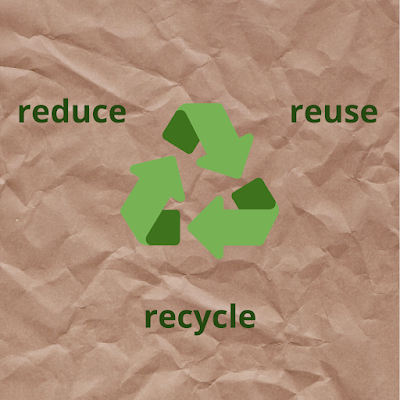Eco-related language change: an #ELTCanDoECO lesson
Last week, I gave a talk at the 40th TESOL France Colloquium about language change and how it’s relevant (or sometimes not) in the ELT classroom. I mentioned several of the key drivers of language change in recent years, including the pandemic, social change, social media, and technology more generally. I also talked about newly emerging language associated with the climate crisis and reactions to it, and I wanted to share one of my ecoliteracy lesson ideas more widely.
In my session, I mentioned some of the new eco-related coinages that have appeared, such as ecocide, rewilding, degrowth and greenwashing. There has also been a proliferation of new compounds formed from existing words in new combinations; net zero, climate vulnerable, regenerative farming, etc. All of which are fascinating and great lesson fodder, but which I’m going to leave aside for now and maybe return to in another post.
As a part of the eltfootprint community, I was inspired by the recent #ELTCanDoECO initiative that encourages ELT professionals to frame ecoliteracy in terms of the kind of Can-do statements we’re already familiar with in our teaching, from example from the CEFR. The initiative is encouraging people to contribute “examples of Can-do statements that straddle environmental competencies and linguistic learning outcomes” – so here’s mine focused around not completely new words, but perhaps appropriately, words which have been repurposed and given new meanings for a new context:
… can describe everyday sustainable actions
Environmental competency aims:
- To encourage learners to discuss ways they can reduce waste in their own everyday lives
- To promote discussion of solutions to reducing waste in the wider community
- To equip them with the language to express and pass on these ideas in English
Language learning outcomes:
- To raise learners’ awareness of patterns of word formation, especially the use of the prefix re-
- To expand their repertoire of re- verbs
- To focus on and practise typical verb + object collocations
Level: This lesson could be adapted for any class from about A2 upwards. For lower levels, introduce fewer of the re- verbs (maybe the key 3 + 2 or 3 others) and keep the tasks simple. For higher levels, use the full range of verbs and push students to develop, expand on and explain their ideas more fully rather than just creating simple, single-sentence responses.
1. Introduce the topic and three key verbs
Use the graphic to introduce these three key verbs – reduce, reuse, recycle. Elicit their meanings and encourage students to explain/discuss their relevance in this context. The initial discussion about overconsumption and waste, how it harms the environment (depleting resources and causing pollution from waste), and how these actions can help mitigate that harm will depend on the level of the students, their existing level of awareness of the issues, and perhaps, whether it’s a topic that’s been covered in class before.
Tip: Stretch higher level students by throwing in some of the vocab I just used there, like overconsumption, deplete and mitigate.
2. Re- prefix and word formation
Highlight/underline the re- in the three verbs and ask students what the prefix usually means, i.e. it carries the idea of doing something again, of repeating. Then introduce as many of the additional re- verbs below as appropriate for the level – be careful not to overwhelm lower levels with too much new vocabulary, but higher levels should be able to cope with more as a lot of the words will be at least partially familiar. Either as a class or in groups, get students to explain the meanings of the new verbs and how they’re relevant in this context.
NOTE: Reduce, refuse and respect don’t use the re- prefix in the same way as the others. If sharp-eyed students spot this, acknowledge that they don’t fit the pattern, but are, nonetheless, useful for getting across the message in a memorable way. Also recover, repair and refurbish don't work as standalone verbs without the re-, but the re- still has the same meaning.
3. Identify collocating objects
In groups, get students to add possible objects that could follow the different verbs in this context, making notes or mind maps of their ideas, e.g. recycle paper, plastic, glass; repair clothes, electronic devices, household items, etc. etc. Monitor, guide, collect ideas as a class and correct/introduce any relevant vocabulary.
4. Productive practice
The next stage is to get students to expand on some of their ideas in a more productive way. This could be done in class or as homework, with students working individually or in groups. My suggestion would be an individual homework task in which students choose maybe four of the verbs plus four of the objects generated in the groupwork. They then find or take appropriate photos to illustrate the actions and create social media posts with simple text to describe the actions. My examples below are all my own photos of things that either I do or, in the case of redesign, that I see happening in my community. These could, of course, also be hand-drawn/illustrated posters or any other format you choose.
Students then bring their posts to share with the class and explain (either to the whole class as mini presentations with their posts up on screen or in groups sharing their posts on their phones). Again, the length and detail of the explanation/presentation will depend on the level of the students – for lower levels just encourage students to put the ideas into full sentences, maybe a sentence or two about each image, for higher levels, push for more details about the how and why and whether the solution is effective. Again, give feedback on any language points and encourage discussion as appropriate.
© The images in this post were all created by me - feel free to copy and reuse them with your classes if you wish.
Labels: #ELTCanDoECO, #ELTfootprint, language change, TESOL France, vocabulary





0 Comments:
Post a Comment
<< Home